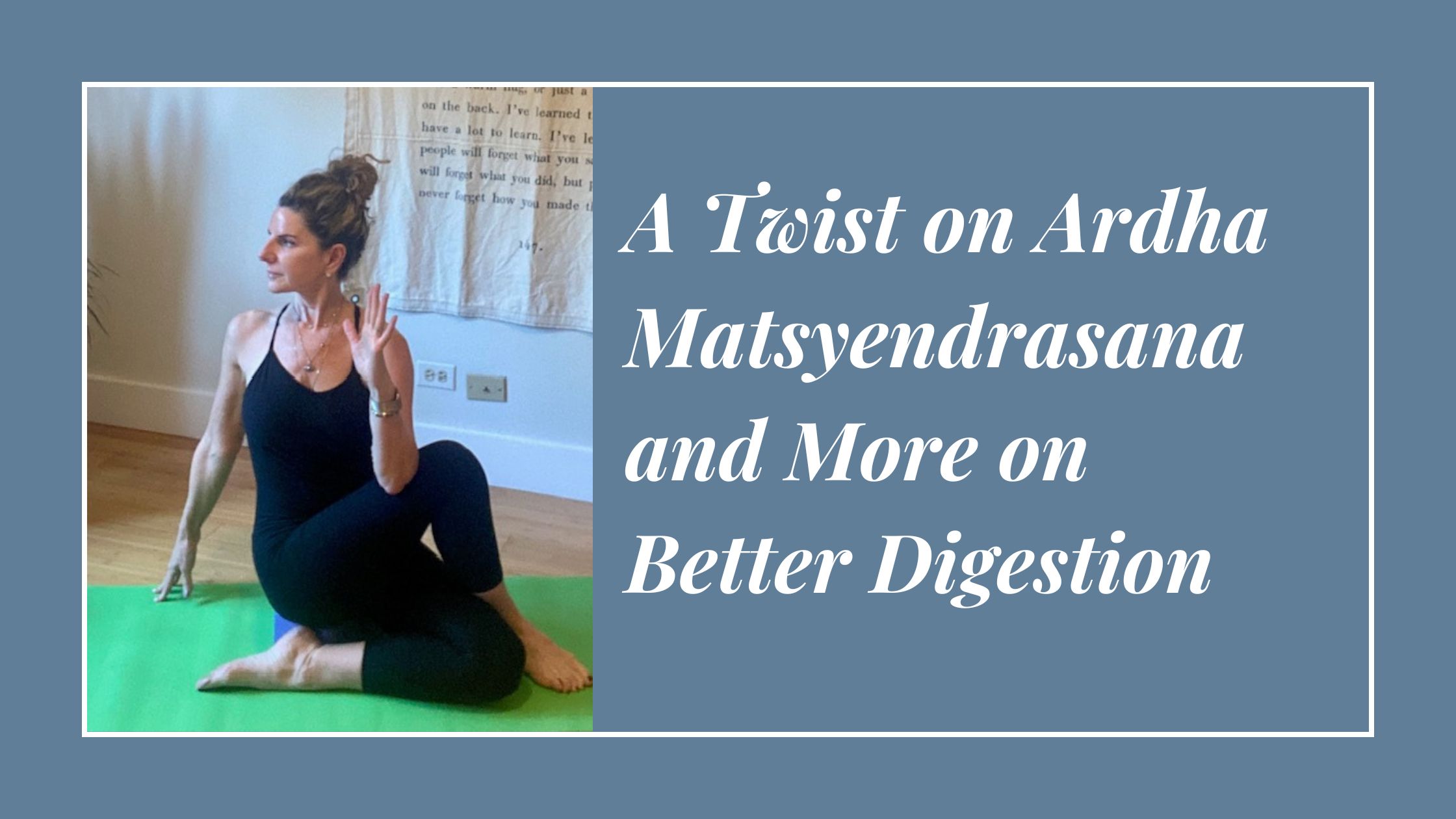One inspiring cue:
ARDHA MATSYANDRASANA When twisting to the right, take your hands to your heart in prayer pose (as shown below), keep tone in your belly, and gently push your right hand into your left. When you twist to the left, you will press your left hand into your right.
One inspiring tip:
When twisting to the right, instead of your hips being level to the front of the room, start with your right hip a little further back than your left. This will allow you to focus more on your mid and upper back in the twist.
Remember…don’t push it when it comes to twists (especially if you have osteopenia or osteoporosis). I referred to this in my last newsletter, which you can read by clicking here.
There is no reason to want to twist more than the natural range of motion for your spine. “On average, each thoracic vertebra can rotate approximately 3 degrees. Therefore, the entire thoracic spine should demonstrate between 30-35 degrees of total rotation to each side.” (nasm.org) “The lumbar spine’s (low back) main functions are flexion and extension (at 60 degrees and 25 degrees respectively) – not rotation, which is only about 12-13 degrees.” (health.com)
One inspiring song:
One inspiring quote:
“Looking behind I am filled with gratitude. Looking forward I am filled with vision. Looking upward I am filled with strength. And looking within I discover peace.”
– Apache prayer
Nutrition nugget:
GET BETTER DIGESTION WITH AN ACIDIC STOMACH!
As we age, we don’t have as much hydrochloric acid in our stomachs. Hydrochloric acid helps us break down and better digest our food. Here’s how Andrea Nakayama, the nutritionist and leader of my Functional Nutrition Program, explains it. “I want to stress that the stomach should be very acidic. We’re under the impression in modern day culture that many of us have too much stomach acid. That is so rarely the case. Drugs like Prilosec and other PPIs (proton pump inhibitors) and OTC antacids only quell the symptoms yet they actually exacerbate the problems by depleting stomach acid that’s already deficient. Again, a stomach that’s too acidic is not very common. We WANT our stomachs to be acidic. And why do we want them to be acidic? Not only is that acid going to kill any living organisms that have no place in our bodies, but the stomach is also like your body’s blender. We want our blenders to work like a Vitamix or Blendtec and break down all that food really efficiently.”
Be mindful with those antacids! And, if you tend to get gassy and bloated after eating, first make sure you are chewing your food VERY WELL. You can read last week’s newsletter for all the benefits of chewing your food. If that doesn’t help, you may want to try a digestive enzyme. I have one on my website under SHOP.
To learn more about stomach acid (or anything else health related), here is a link to Andrea’s podcast.
Want EVEN more nutrition inspiration? Check out my recent newsletters on Magnesium, Sugar Balance, and Tryptophan.

